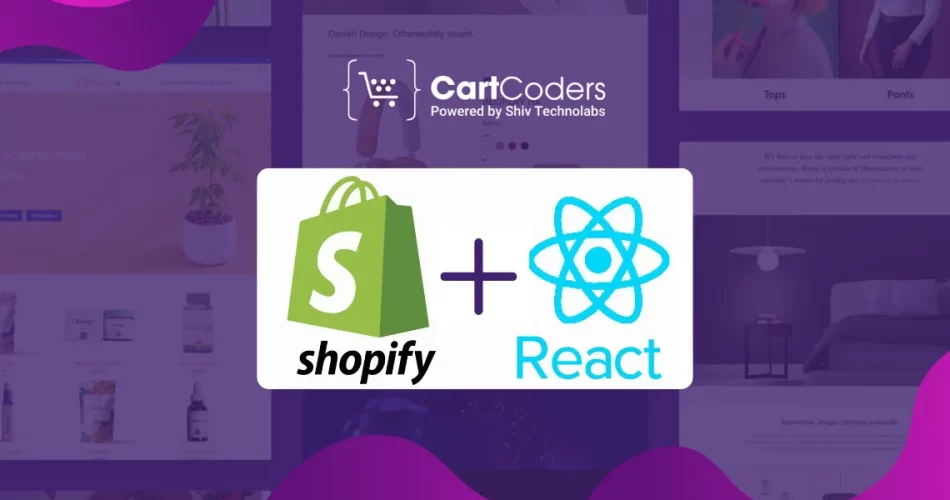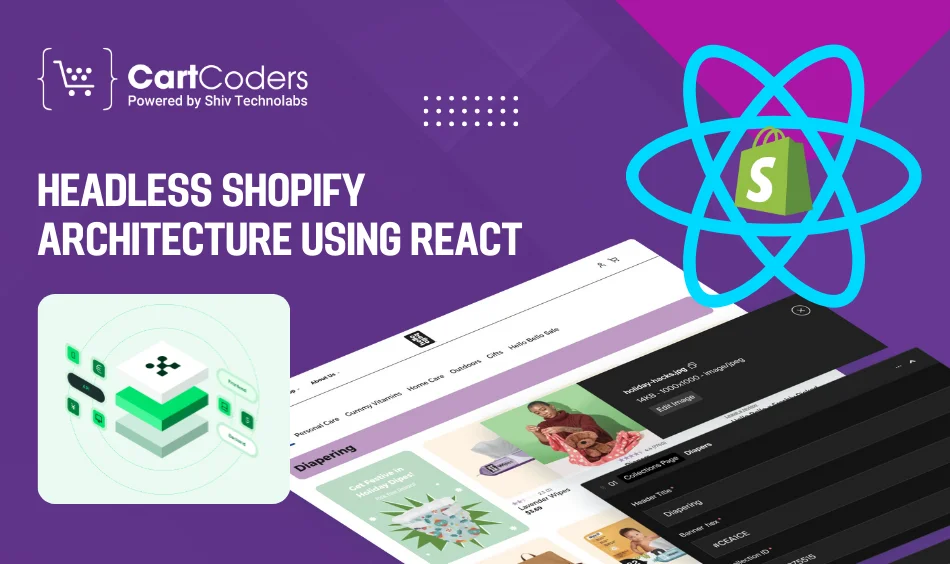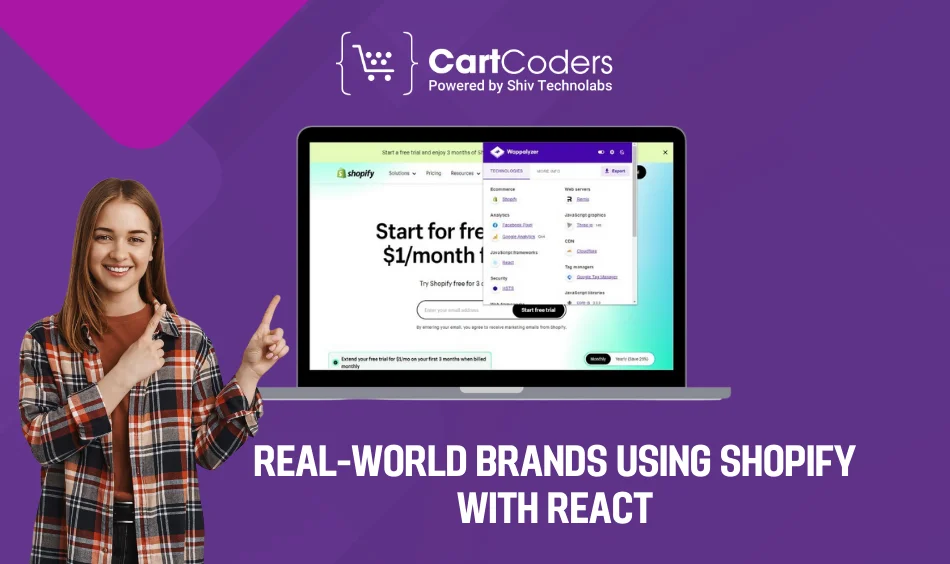Custom Engagement Solutions
Unlock tailored solutions with a free, no-obligation strategy session.
Expert Developers & Engineers on Demand
Scale Your Team with Skilled IT Professionals
Expert Guidance for Digital Transformation

Shopify powers thousands of online stores across the world. It’s trusted for its user-friendly dashboard, app integrations, and reliable checkout system. But as online shopping gets more competitive, many brands want more than just a basic store—they want full control over the look and feel of their website.
That’s why more businesses are now choosing to build Shopify with React.
By combining Shopify’s backend features with the speed and flexibility of React, brands can build custom storefronts that stand out. Whether it’s better performance, smoother browsing, or tailored product pages, React with Shopify offers the tools to make it possible.
React is a JavaScript framework used to build fast, interactive web interfaces. Shopify, on the other hand, is a complete eCommerce platform with strong backend support. When you pair React with Shopify, you get the best of both worlds: a powerful backend and a fully customizable frontend.
Brands that build Shopify with React often do so because:
With React with Shopify, developers can create unique customer experiences, improve mobile usability, and add interactive features that boost engagement.
A store built using Shopify with React looks and behaves differently from a traditional theme-based site. Instead of using Liquid templates, everything on the frontend is powered by React.
Here’s what you’ll typically see in a custom React with Shopify storefront:
All of these features are possible when developers choose to build Shopify with React from the ground up.

One of the most common ways to use React with Shopify is through a headless setup. In this structure, Shopify handles the backend (product data, orders, customer info), while React powers the frontend.
This approach gives developers complete freedom to create the store layout and interactions from scratch.
To make this work, the frontend connects to Shopify using the Storefront API. This API delivers product and customer data to the React app in real time, making the whole shopping experience more flexible and responsive.
Popular tools for building Shopify with React include:
All of these tools allow teams to build React with Shopify projects that fit the needs of fast-growing brands.
There are several reasons why brands are switching to React with Shopify. Here are a few key benefits:
React improves load times and page transitions. Customers can move between products and collections without delays.
Building Shopify with React gives developers full control over layout, animation, and interactions. This makes it easier to align the site with brand goals.
With React, stores can add live features like size selectors, color previews, and quick product filters.
As traffic grows, custom frontends built with React with Shopify can handle more users and add new features with less friction.

Many big names have already adopted React with Shopify for their online stores. Let’s look at how some of them are using it:
Gymshark uses a headless setup, combining Shopify with React to improve speed during traffic spikes. Their store handles global traffic while keeping the checkout fast.
Allbirds runs a custom storefront using React with Shopify, allowing them to create product pages that focus on storytelling and environmental impact.
Heinz launched a direct-to-consumer store using React with Shopify to give customers a quick, responsive buying experience.
L’Occitane’s site uses a Shopify with React architecture to manage multiple store versions across countries while keeping branding and design consistent.
These examples show how React with Shopify helps brands take control of their user experience and deliver faster, more polished online stores.
As brands grow, they often move to Shopify Plus, which offers more features and scalability. Many of these high-volume stores choose to pair Shopify Plus with React to build custom storefronts.
Here’s why it works:
Shopify Plus merchants can move beyond pre-made themes and build Shopify with React storefronts tailored to their needs.
Shopify Plus includes higher API rate limits, which work well for advanced React with Shopify builds.
With more backend access, brands on Shopify Plus can power real-time features, fast carts, and personalized content. Many choose to hire Shopify Plus experts to make the most of this setup.
Allbirds, Gymshark, and Heinz are just a few examples of companies using Shopify with React in headless environments to deliver fast, flexible eCommerce experiences.
When building React with Shopify, developers often break the frontend into smaller, reusable components. These help manage the site better and make updates easier.
Some of the most common Shopify React components include:
Each of these components helps bring a custom Shopify with React store to life, improving both design and usability.
If you’re asking, “Can I use React with Shopify?” — the answer is yes. It’s a growing trend among brands that want to go beyond standard templates.
Here’s a quick breakdown of how to build React with Shopify:
Some developers also choose to build a Shopify app with Node.js and React to add custom features or tools that improve the shopping experience.
Building a custom storefront using Shopify with React takes careful planning and experience. That’s where CartCoders comes in.
CartCoders specializes in React with Shopify development, including headless builds, Hydrogen-based stores, and API integrations. Whether you need a fast new frontend or a unique customer experience, their team is equipped to help.
Their developers know how to connect the frontend and backend smoothly, build custom features, and design storefronts that perform well.
If you’re ready to take your Shopify store to the next level, working with a team that understands Shopify with React can make the process easier and more efficient.
Pairing React with Shopify gives brands more control over their store’s design, speed, and features. It’s a strong choice for those who are ready to move beyond the limits of pre-made themes.
Whether you’re running a small shop or managing a growing brand on Shopify Plus, building Shopify with React could be the next step in delivering a better experience for your customers.
So, are you ready to make your business a multi-million-dollar brand? Don’t wait, contact CartCoders today!
Projects delivered in 15+ industries.
95% retention rate, building lasting partnerships.
Serving clients across 25+ countries.
60+ pros | 10+ years of experience.